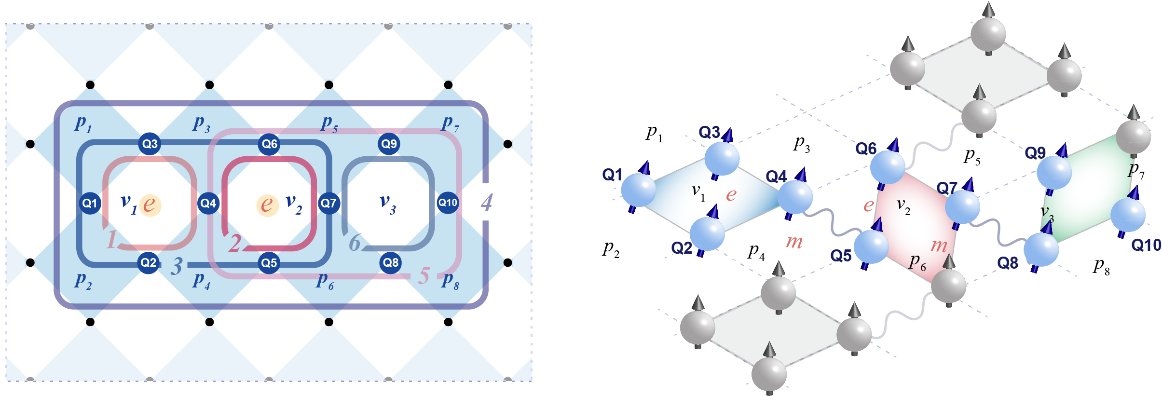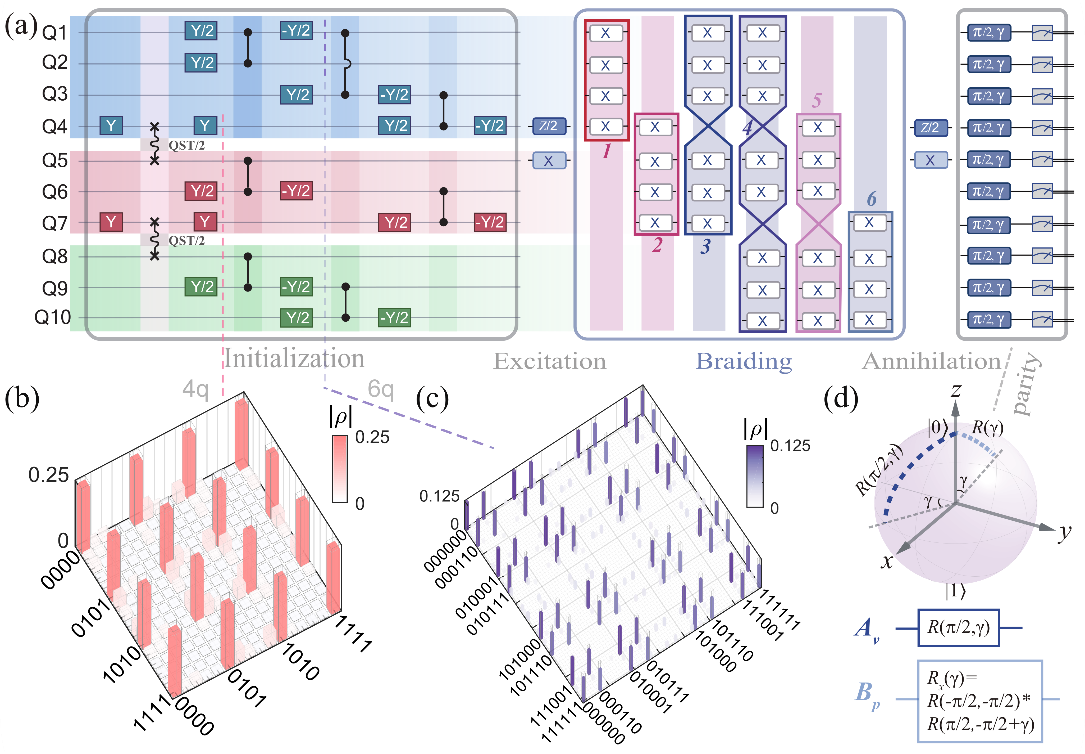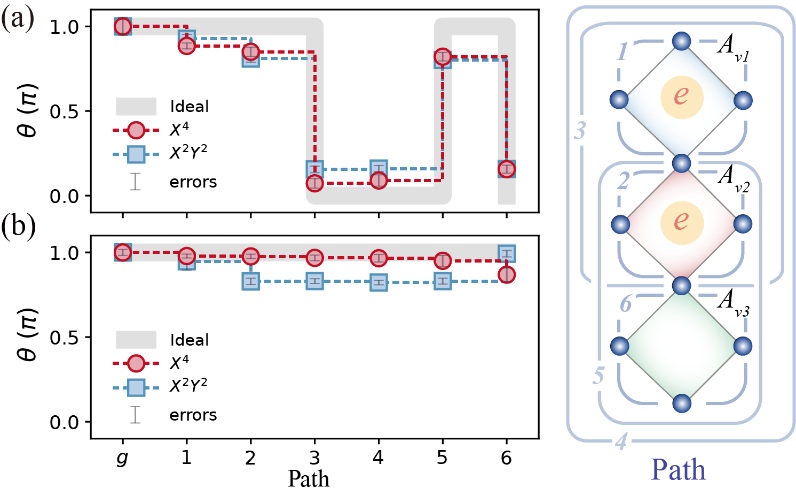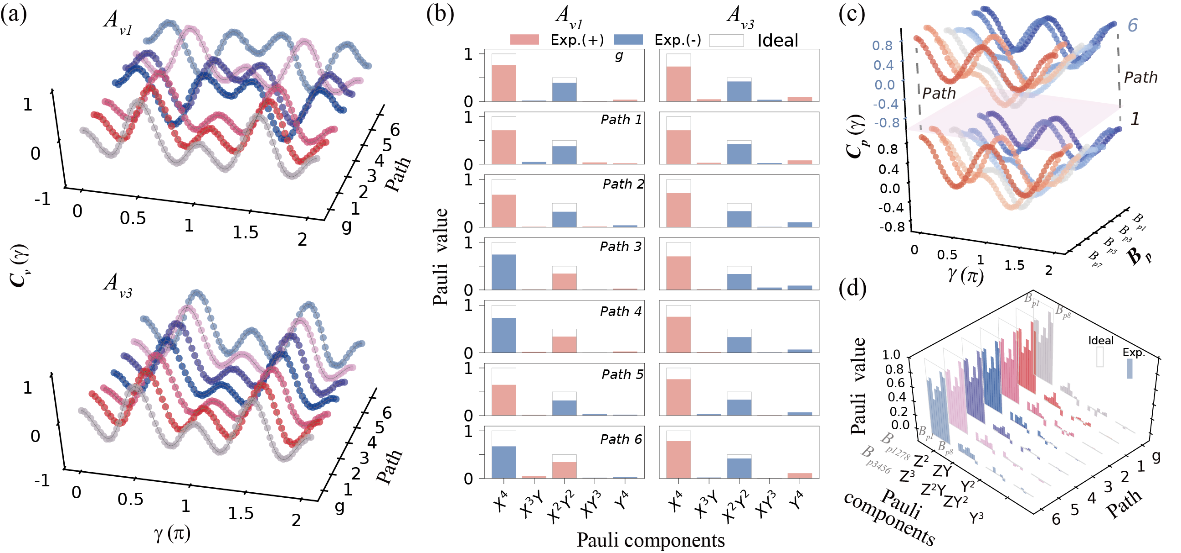Scientists successfully demonstrate path-independent anyon braiding on modular superconducting quantum processor
2024-01-22
Anyons, unique quasiparticles in two-dimensional space, play a crucial role in universal topological quantum computation due to their nontrivial exchange statistics. The toric code model, a prominent framework for achieving fractional statistics of anyons, faces challenges in upscaling quantum simulations, primarily due to the intricately entangled nature of its ground state. The distributed integration holds the potential to overcome the architectural limitations of a single chip and can provide hardware convenience for implementing the toric code model.

Chair Professor Dapeng Yu’s research team from the Shenzhen Institute for Quantum Science and Engineering (SIQSE) at the Southern University of Science and Technology (SUSTech) has made new progress in distributed quantum simulation using superconducting quantum circuits. They have employed a distributed quantum architecture to realize the toric code model and successfully demonstrated path-independent anyon braiding, demonstrating the advantage of distributed architecture in the field of quantum simulation.
Their research findings, entitled “Demonstrating Path-Independent Anyonic Braiding on a Modular Superconducting Quantum Processor,” have been published in the journal Physical Review Letters.

Figure 1. The toric code model and its hardware implementation on a modular superconducting quantum processor

Figure 2. Schemes for toric code ground state preparation, anyonic excitation, braiding, and annihilation, as well as correlation measurement, along with the characterization of the ground state
In this study, the research team cleverly implemented a two-dimensional toric code model using high-quality interconnected superconducting quantum chips. They elucidated the braiding characteristics of anyons and successfully extracted the topological phase. This represents the first experimental utilization of distributed quantum processors for simulating topological phase.

Figure 3. Measurement results of the topological phase
The researchers employed a distributed superconducting quantum processor as the hardware implementation for the toric code model. Through the execution of parallel quantum gate operations across distinct modules, an efficient generation of a 10-qubit toric code ground state was accomplished across three modules, underscoring the hardware versatility of distributed superconducting quantum processors in realizing quantum computing models.
Moreover, they introduced a method utilizing correlation measurements capable of extracting phase information from each braiding path, thereby efficiently and scalably validating the path independence of anyon braiding statistics. This approach capitalizes on universal correlation curves, decomposing Pauli components to extract necessary observables, providing a solution for characterizing highly entangled states and extracting valuable information.
This study establishes a precedent for simulating topological phases using distributed quantum processors, offering insights into quantum simulation based on a distributed architecture.

Figure 4. Correlation measurements and the extracted Pauli components
Associate Researcher Jingjing Niu, master’s student Yishan Li, and Ph.D. student Libo Zhang are the co-first authors of the paper. Jingjing Niu, Youpeng Zhong, and Dawei Lu are the corresponding authors, and Chair Prof. Dapeng Yu is the last author.
The research work was supported by the National Natural Science Foundation of China (NSFC), Department of Science and Technology of Guangdong Province, Science, Technology and Innovation Commission of Shenzhen Municipality, and SUSTech.
Paper link: https://doi.org/10.1103/PhysRevLett.132.020601




